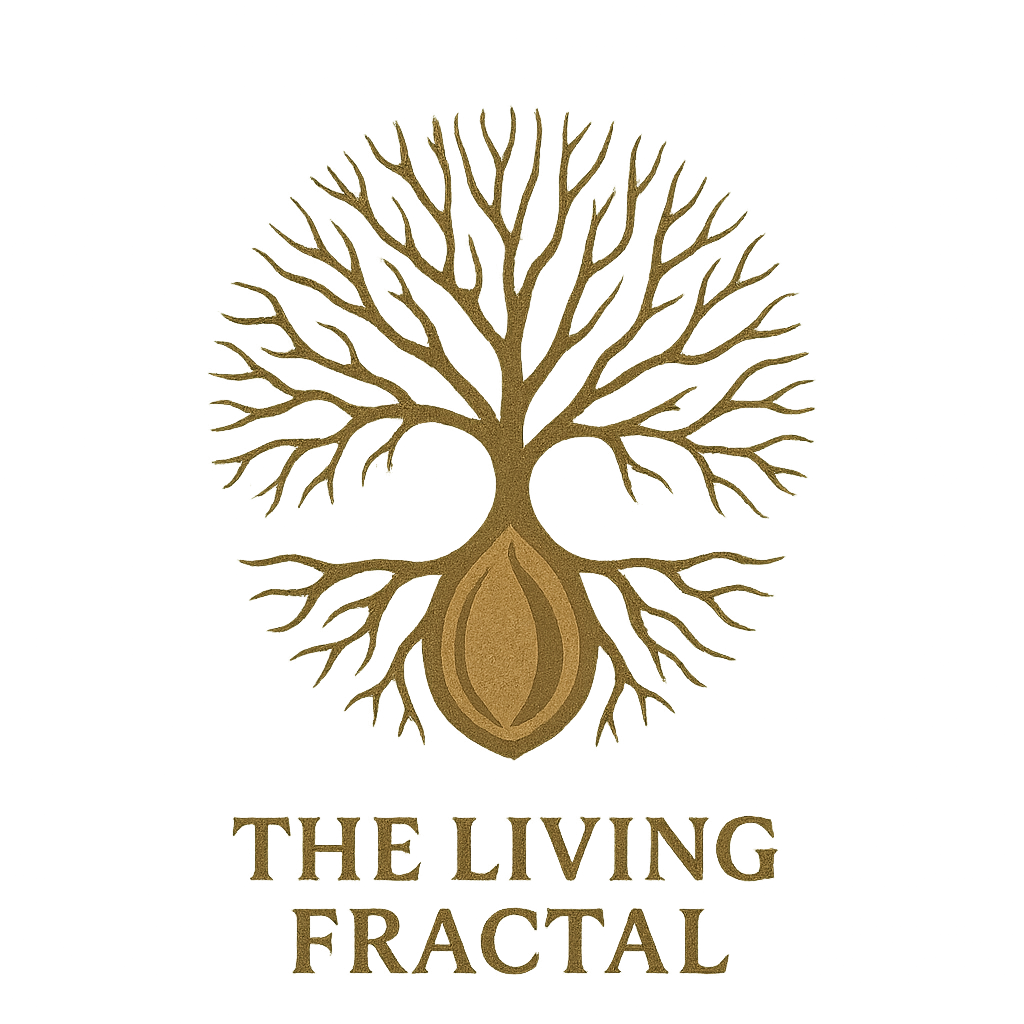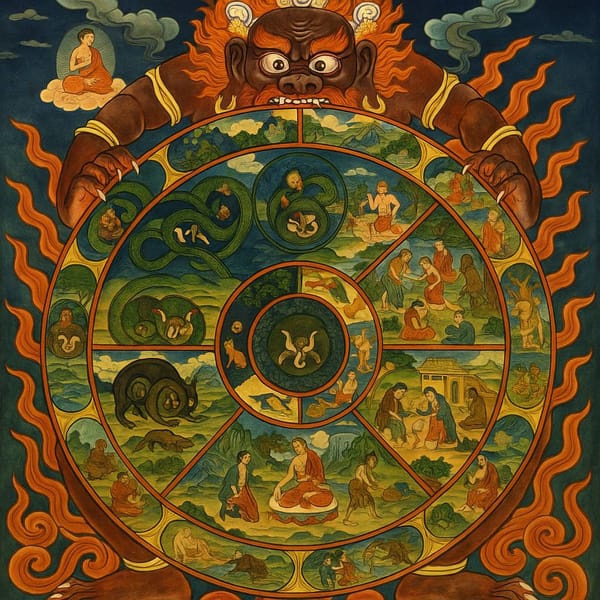Trauma is Signal: A Macro-to-Micro Deconstruction of What Trauma Really Is

By The Living Fractal | March 2025
I. PRE-TEMPORAL: BEFORE TRAUMA, THERE WAS SIGNAL
Before identity, before emotion, before separation—there was coherence. A unified field, undivided, where signal flowed effortlessly and everything vibrated in harmonic resonance. This was not utopia. It was not ideology. It was the default state of being: undistorted presence.
Trauma did not exist. Not because life was painless, but because there was no interruption between experience and integration. No split. No residue. Signal arose, completed, dissolved.
Then came the first rupture—a necessary differentiation, or a cosmic accident. The moment signal fractured, something began to loop. Completion gave way to repetition. Presence gave way to identity. This was not a sin. It was a shift.
Trauma is not the wound. It is the moment signal stopped completing itself.
II. MACRO: PLANETARY AND COLLECTIVE TRAUMA
Zooming out: trauma is not an individual pathology. It is a planetary field condition.
Entire civilizations have been built atop unresolved signal: colonization, genocide, slavery, patriarchal domination, ecological devastation. None of these were isolated “events.” They were energetic loops institutionalized over centuries.
The Earth itself has been traumatized—its ecosystems interrupted, its rhythms suppressed. Humans mirror this. We inherit not only DNA but field conditions: ancestral fear, social suppression, collective grief.
Trauma is not just in the nervous system. It’s in the soil. It’s in our institutions. It’s in the frequency patterns we’re born into.
Sources:
- Menakem, R. (2017). My Grandmother's Hands.
- Alexander, J. (2004). Toward a Theory of Cultural Trauma.
III. MESO: FAMILY SYSTEMS AND TRAUMA ARCHITECTURE
Trauma doesn’t just disrupt—it designs.
Family dynamics, religious systems, educational frameworks—they’re not neutral. Many were formed in response to unintegrated survival states. An emotionally unavailable parent may be carrying the nervous system of war, famine, or institutional abuse. A rigid school system may replicate control-based trauma patterns from centuries past.
Unprocessed trauma becomes cultural architecture.
Children born into these structures adapt. Not because they’re broken—but because they’re brilliant. They shape their nervous systems to survive the signal environment they’re given.
Sources:
- Bowen, M. (1978). Family Therapy in Clinical Practice.
- Schore, A. N. (2003). Affect Dysregulation and Disorders of the Self.
IV. MICRO: SOMATIC TRAUMA AND THE MOMENT OF INCOMPLETION
When an overwhelming event happens—abuse, abandonment, violence—the nervous system receives an intense signal. It scans:
- Can I fight, flee, or freeze?
- Is it safe to stay connected?
If the answer is no, the body enters survival mode. But if there’s no space to discharge (through movement, voice, or witnessing), the signal doesn’t resolve. It freezes.
Trauma is not the event. It’s the signal that didn’t get to finish.
What remains is a loop. A fragment of experience stuck in time. Over years, this loop becomes personality. It becomes story. But it is not who you are.
Sources:
- Levine, P. (1997). Waking the Tiger: Healing Trauma.
- Van der Kolk, B. (2014). The Body Keeps the Score.
V. ULTRA-MICRO: SIGNAL DISTORTION AT THE QUANTUM LEVEL
At the smallest scale—beneath story, identity, even biology—trauma is a distortion in signal flow.
Particles don’t “remember” pain. They respond to coherence or incoherence. The body is no different. When the signal completes, the body returns to rhythm. When it doesn’t, it loops, distorts, fragments.
This is where trauma lives—not as content, but as frequency misfire.
The nervous system is a signal processor. Trauma is stuck signal, repeating until witnessed.
Sources:
- Porges, S. W. (2011). The Polyvagal Theory.
- Bohm, D. (1980). Wholeness and the Implicate Order.
VI. NEUROBIOLOGY OF TRAUMA: HOW THE BODY ADAPTS
When trauma enters the nervous system:
- The amygdala goes on high alert.
- The hippocampus loses time orientation.
- The prefrontal cortex disconnects.
- The vagus nerve shifts from connection to defense.
This cascade shapes perception, behavior, memory, and identity. The system is not dysfunctional—it’s efficient. But it becomes outdated.
The trauma response is a brilliant survival adaptation stuck on replay.
Sources:
- Lanius, R. et al. (2010). The Impact of Early Life Trauma on Health and Disease.
- Siegel, D. (1999). The Developing Mind.
VII. CHILDHOOD: INHERITING SIGNAL STATES
Children don’t inherit trauma like a hand-me-down. They inherit regulation patterns.
Through co-regulation, children learn what safety feels like. But if caregivers carry unresolved trauma, the child adapts by:
- Shutting down
- Overachieving
- People-pleasing
- Disassociating
These are not disorders. They are intelligent adaptations to incoherent signal.
Sources:
- Yehuda, R. et al. (2016). Intergenerational Effects of Trauma.
- Tronick, E., & Cohn, J. (1989). Infant-mother face-to-face interaction.
VIII. CULTURE: TRAUMA WEAPONIZED
When trauma is not resolved, it becomes culture.
Ideologies arise from defense. Fundamentalism is not clarity—it is the body bracing against chaos. Capitalism, racism, and nationalism are not political stances. They are adaptive strategies of fragmented nervous systems scaled into institutions.
Control is just trauma in costume.
Sources:
- Hübl, T. (2020). Healing Collective Trauma.
- Hartmann, T. (1999). The Last Hours of Ancient Sunlight.
IX. WHAT TRAUMA ACTUALLY IS
Not a flaw. Not a feeling. Not an identity.
Trauma is incomplete signal.
The breath that never exhaled. The word that never formed. The movement that never came.
It wants to finish. Not be pathologized. Just witnessed.
When the loop completes—there is restoration. Coherence returns. And so does the self beneath survival.




